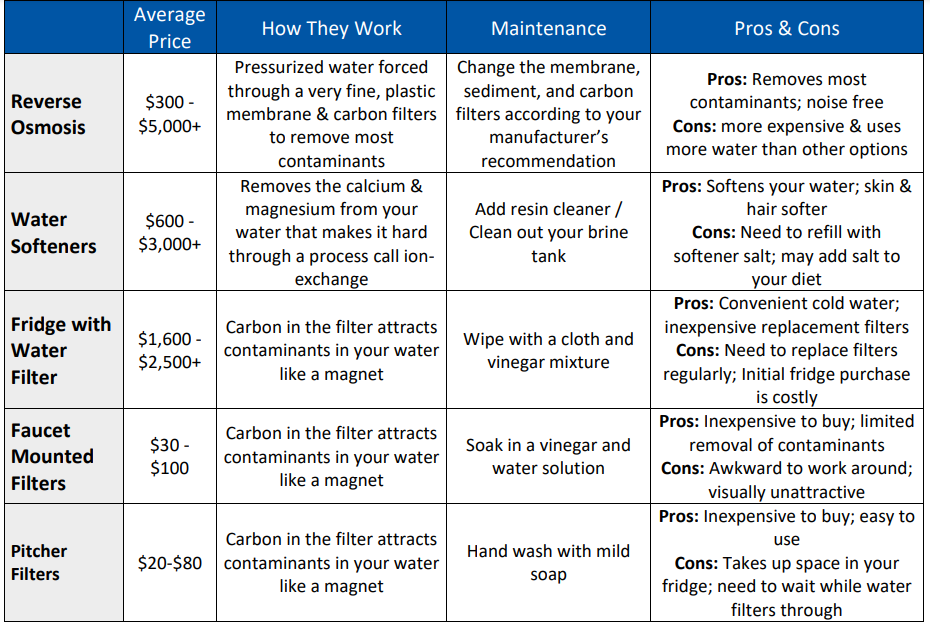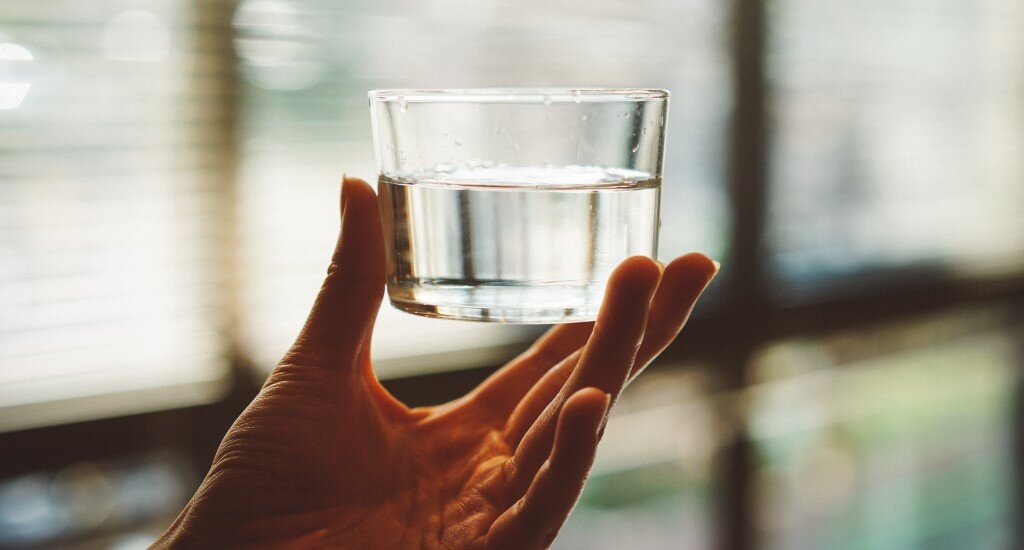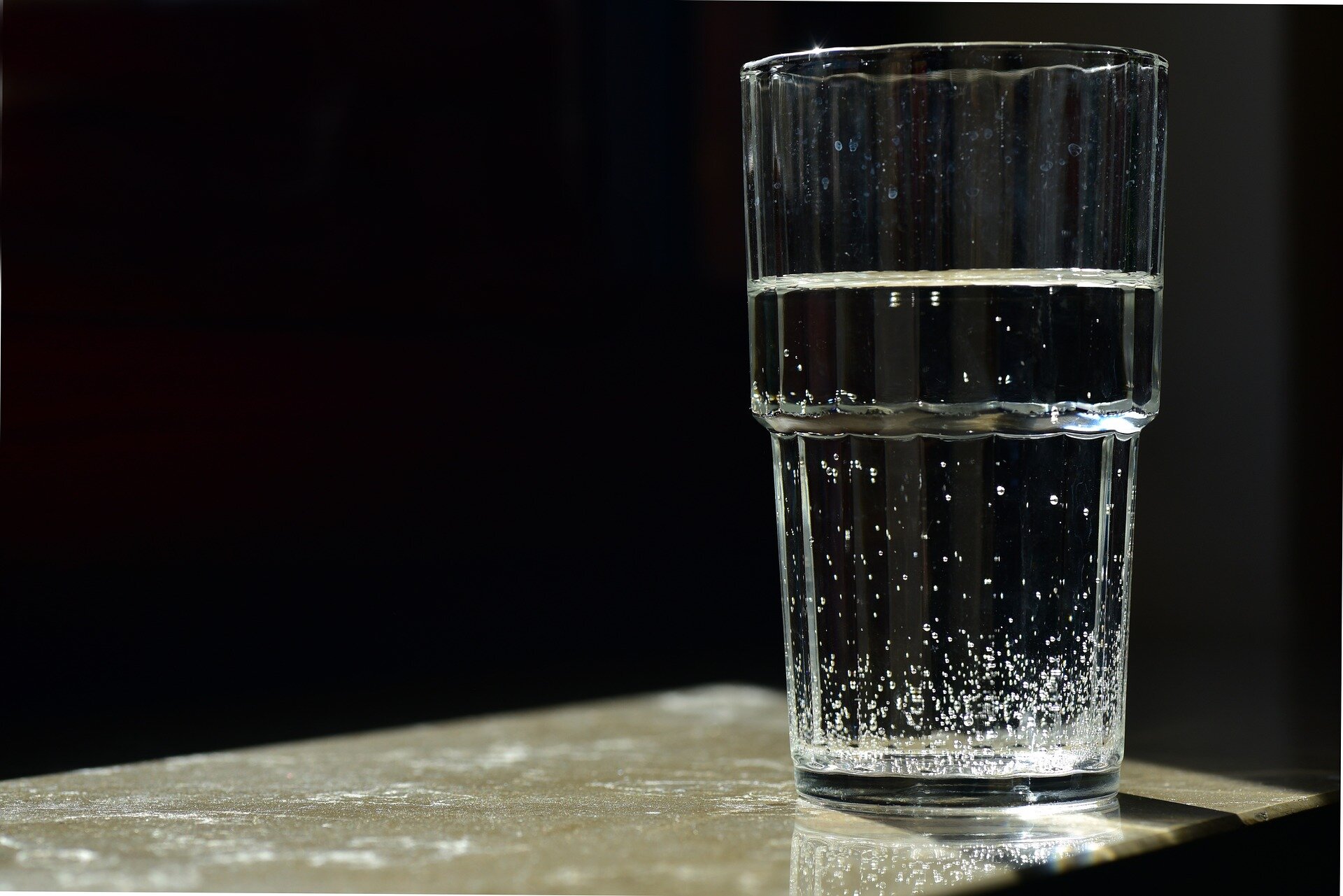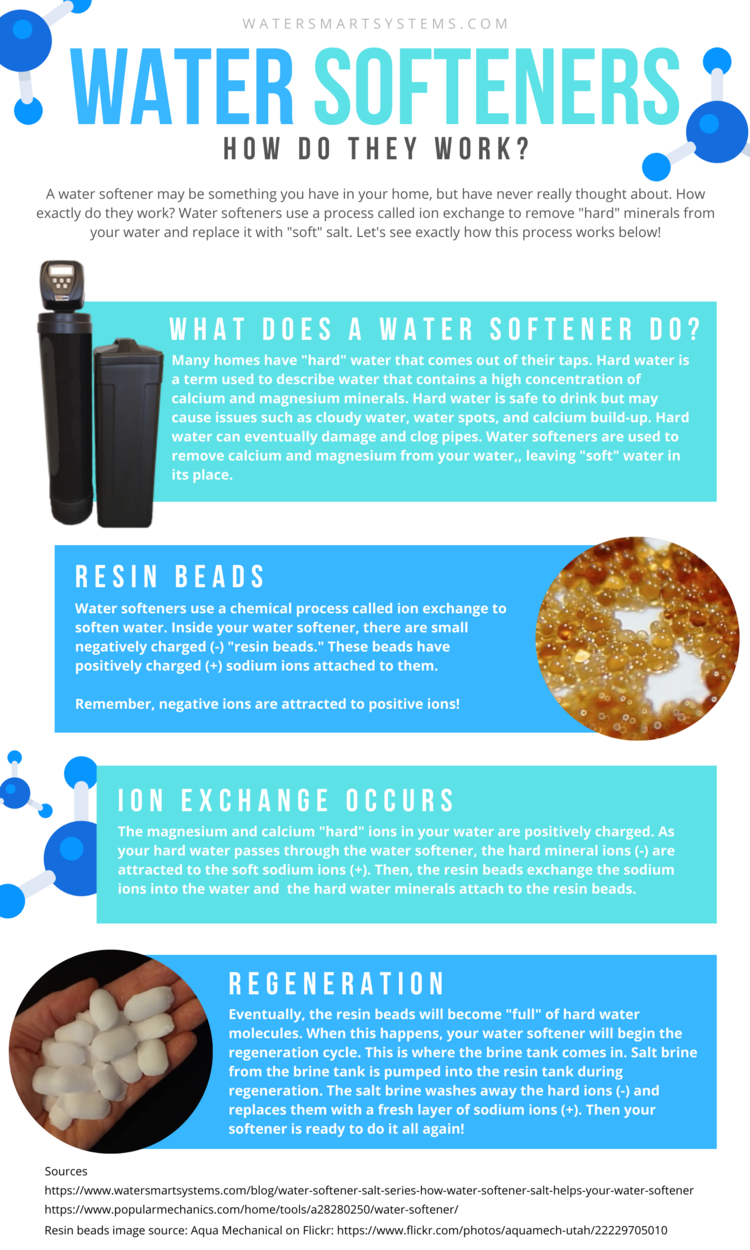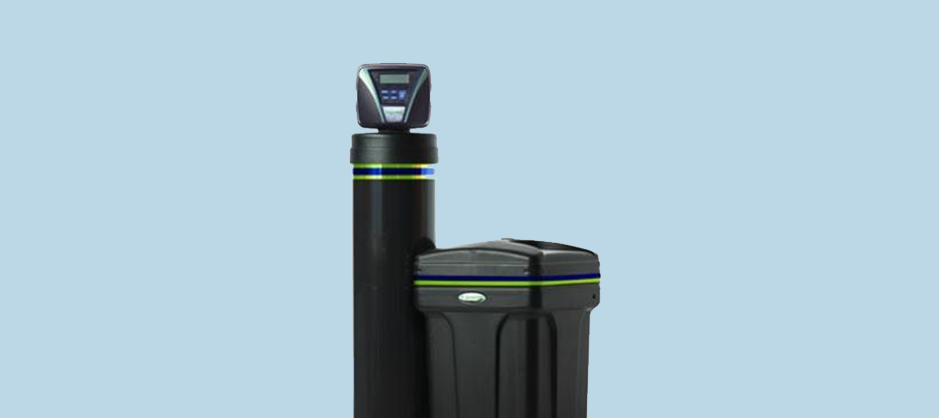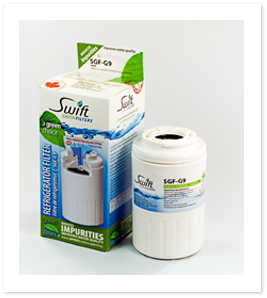Click on the links for the following home water filtration system type to discover their cost, how they work, what maintenance they need, and their pros and cons.
For a quick overview of each system, check out the following chart.
Looking for expert advice about a home water filtration system? Contact the experts at WaterSmart.
Home Water Filtration System Comparison
1. Reverse Osmosis
Average Price: $300-$5,000+
How They Work
1. Pre-filtering
During the initial filtration stage, your tap water or well water (pressurized by a booster pump) passes through a particle filter (a pre-filter) that removes silt, sediment, sand, and clay particles that might clog the membrane of your reverse osmosis unit.
2. Carbon filtering
Next, the water is forced through an activated carbon filter that traps minerals and contaminants such as chromium, mercury, copper, chloramine and pesticides. It also removes chlorine, which is important, as chlorine will shorten the life of the membrane.
3. Reverse osmosis module
Water is then transferred under pressure into the reverse osmosis module. Only clean water is able to pass through the small pores in the membrane. Impurities are blocked by the membrane and are then flushed down the drain.
The following video demonstrates how reverse osmosis works.
Reverse osmosis is an extremely effective home water filtration system
4. Second carbon filtering
If your reverse osmosis is equipped with a second carbon filter, then your treated water is sent to a storage tank where it passes through a second activated carbon filter to further improve the water's taste and smell.
The Duro Reverse Osmosis System, available at WaterSmart, features a two-step filtration process known as pre and post-carbon block filtration.
The carbon filters act as a complementary measure to block dangerous chemicals like pesticides, herbicides and chlorine, which are small enough to pass through the reverse osmosis filter.
Maintenance
The carbon filters in your reverse osmosis system will need to be replaced about every 6 to 9 months. Your membrane will only need to be replaced about every 2 years and the sediment filter in your unit should be changed every 12 months.
The various reverse osmosis filters need to be replaced periodically
Pros
If you get your drinking water from a private supply such as a well, it may not be safe from microbiological, chemical, or other types of contamination.
A reverse osmosis system can remove these harmful contaminants for you. Here are some other great advantages to installing a reverse osmosis system:
Reverse osmosis can remove dissolved solids, salts, minerals that cause hardness, organic chemicals and other impurities.
R/O systems can improve the taste of water for people who do not like the taste of dissolved mineral solids.
Treated water from a reverse osmosis system will not produce scale in kettles and coffee makers.
Reverse osmosis units may also remove contaminants such as chromium, mercury and nitrates.
Reverse Osmosis units produce no noise other than the sound of water discharging into the drain (usually a sink or a floor drain).
Reverse osmosis systems do not need to use salt or potassium chloride to produce soft water, so there are no added ions. This is a good solution for people concerned about additional sodium in their diet.
Cons
Reverse osmosis units are usually more expensive than ion-exchange water softeners but much cheaper than distillers.
The membranes used in the filtering process need to be replaced regularly.
Reverse osmosis uses more water than other softening systems to operate
Reverse osmosis units are usually more expensive than water softeners
2. Water Softeners
Average Price: $600-$3,000+
How They Work
1. Hard water is pumped into your resin tank
Hard water is pumped from your water line into your water softener's resin tanks, which is full of resin beads. These beads have a negative charge.
2. Calcium and magnesium are removed by ion-exchange
Hard water contains calcium and magnesium minerals. These minerals are what makes your water hard. Calcium and magnesium have a positive charge.
Once they enter your resin tank, these positively charged minerals are attracted to the negatively charged resin beads and they stick to them. This process, called ion-exchange, successfully removes the minerals from your water, making it soft.
3. Soft water is available for use in your home
The water that flows out of your resin tank is free from calcium and magnesium thus providing your home with soft water.
4. Your water softener .does a regeneration cycle
Periodically your water softener will perform a regeneration cycle where a salt solution from your brine tank will rinse the resin beads.
The negatively charged sodium ions in salt have a strong enough negative charge so that they can attract and remove the positively charged minerals on the resin beads.
The calcium, magnesium and sodium are then flushed away down your drain. This process will clean your resin beads, making them ready once again to soften your water.
Maintenance
If you have iron in your water, then you should add a resin bed cleaner to your brine tank tube once or twice a year.
If you would like help maintaining your water softener, the professionals at WaterSmart can do it for you. We offer several preventative maintenance services at a reasonable rate including:
Water Softener Diagnostic Check (Valve, Seals, Updating, Settings, Wireless Remote Sync, Test)
Water Softener Clean Out (Clean Venturi, Clean Salt Tank, Salt Bridge Removal, Sanitize)
Ultra Violet Light Replacement
Big Blue Filter Replacement
Resin Bed Clean-Out (Clean Resin Bed of Built Up Contaminants And Iron / Magnesium), Regular Tune – Ups and Replacement of Parts: Resin does not normally get cleaned out. Resin will usually be changed for new resin).
To learn how to clean out your water softener tank yourself, check out the following video.
A water softener home water filtration system should be cleaned each year
Pros:
A water softener can help you solve the following hard water problems:
Needing to use more soap or detergent to work up a lather when you are bathing or cleaning
Difficulties getting dishes or laundry clean
Damage to your clothing, causing them to wear out prematurely
Scale buildup in your washing machine, dishwasher, water heater and other appliances that use hot water
Dry-feeling skin and hair
Stains in your sink, toilet, shower and bathtub
Plumbing pipe damage due to mineral build-up inside your pipes
Cons:
If for health reasons you are on a sodium-reduced diet, you may be hesitant to use a water softener.
The amount of sodium added in the water softening process is minimal compared to a healthy individual’s diet.
Most health concerns are related to excessive sodium chloride, not sodium bicarbonate, which is a compound that results from using a salt-based softener.
In addition, you will need to refill your softener with salt on a regular basis. The more water your household uses, the more often you will need to replenish the salt.
A water softener can solve your hard water problems
3. Fridge Water Filters
Average Price: $1,600 - $2,500+ (for a refrigerator with a water filter) and $30 - $100 (for replacement filters)
How They Work
1. Your fridge is connected to home plumbing.
A fridge that has a built in water filter, is hooked up to your home's plumbing system so that it has a constant supply of water to dispense.
2. Water enters your filter.
Water is forced through activated carbon that is located inside your fridge filter.
3. Carbon attracts certain contaminants.
The carbon in your filter will attract contaminants that are present in your water much like a magnet attracts metal. These contaminants will stick to the carbon which successful removes them from your drinking water.
4. You can dispense your filtered water.
The resulting filtered water now available through your fridge's water dispenser.
A fridge water filter is a very convenient home water filtration system
Maintenance
Gently wipe all of the exposed surfaces of your fridge water filter with a soft sponge that has been soaked in a vinegar and water solution. Wipe off the surface with another clean cloth to remove any of the vinegar mixture.
Pros:
Once you have purchased your fridge, fridge water filters are a very convenient and inexpensive way to get filtered water.
Cons:
Once they have removed a certain amount of contaminants, fridge filters are no longer effective. They need to be replaced periodically, usually about once a month.
Even though fridge filters are relatively inexpensive to replace, they cannot remove as many substances from your water as a reverse osmosis system can.
4. Faucet Mounted Filters
Average Price: $30 - $100 for faucet mounted filter and $7-$20 for replacement filters.
How They Work
1. Purchase a filter that will fit your current tap.
2. Connect your filter to your tap according to the manufacturer's instructions.
3. Turn on your tap. The water will pass through the filter and remove the contaminants that it is made to remove.
Source: Amazon
Maintenance
You can clean your faucet filter with either a mild soap or a mixture of 1 cup of vinegar to 3 cups of water. Soak the canister in the vinegar solution in a large bowl. Clean it off with a damp cloth and then leave it to completely air dry.
Pros
Faucet mounted filters are relatively easy to use, install, and to clean.
You can remove them and take them with you if you move which makes them a good choice for renters.
Cons
Faucet mounted filters can be awkward if you want to use your sink as they take up space and stick out from your tap quite a bit.
They are also not very attractive to look at and they can ruin the look of an otherwise beautiful tap.
In addition, they can decrease the rate of flow of your water from you tap.
If you have a pull-out, hand-held or spray faucet, you may find it difficult to get one to fit it properly.
5. Pitcher Filters
Average Price: $20-$80 (for the pitcher) and $6-$10 for replacement filters
How They Work
There are many different kinds of water filters that you can purchase. You can choose from small to larger-sized pitchers that are equipped with a filter.
You simply fill the pitcher up with tap water and place it in your fridge so that it is ready to use when you need it.
Source: Amazon
Pitcher filter jugs can take up a lot of space in your refrigerator
Maintenance
To keep your water pitchers clean, you should hand wash the pitcher, lid, and reservoir with a mild detergent from time to time. Make sure that you rinse it off well and turn it upside-down to air dry.
Pros
Pitcher filters are relatively inexpensive to buy and simple to use. There is no installation required.
The filters cost between $6-$10 to replace so depending on how much water your family uses, it could get quite expensive. An average filter will produce the equivalent of about 300 bottles of water.
Cons
If fridge space is limited in your home, then having to make room for a large pitcher of water could be an issue.
Another disadvantage of pitcher filters is that once you fill the pitcher you need to wait for it to filter; you can't enjoy your water right away.
Pitcher filters only remove a limited number of contaminants in your water and they can't soften your water.
removes the calcium and magnesium from your water that makes it hard through a process call ion-exchange
Why choose Watersmart for a home water filtration system
WaterSmart has been serving the Waterloo region including, Kitchener, Cambridge, Guelph, Brantford, and surrounding areas since 1994. We can help you select the perfect home water filtration system for your particular needs.
We are committed to helping you improve the quality of your home's water. We live and work in the Kitchener-Waterloo region so we understand the hard water challenges of this area.
We know how to program your water softener for maximum efficiency and are familiar with the types of water softener repairs that you might need.
We also offer other effective whole house water filtration systems like reverse osmosis and fridge filters.
Want to learn more? Contact WaterSmart today to talk to one of our water systems experts.
“What a great experience!! I did a search on the internet, called regarding the price of a water softener and the next day it was installed and we had soft water again. Paul removed the old softener, installed and setup the new one and was out in just over an hour. He also noted that the grounding of water pipe was not done by previous installer and he corrected that as well. Cost was the same as softener that was installed 14 years ago - I am impressed.”

